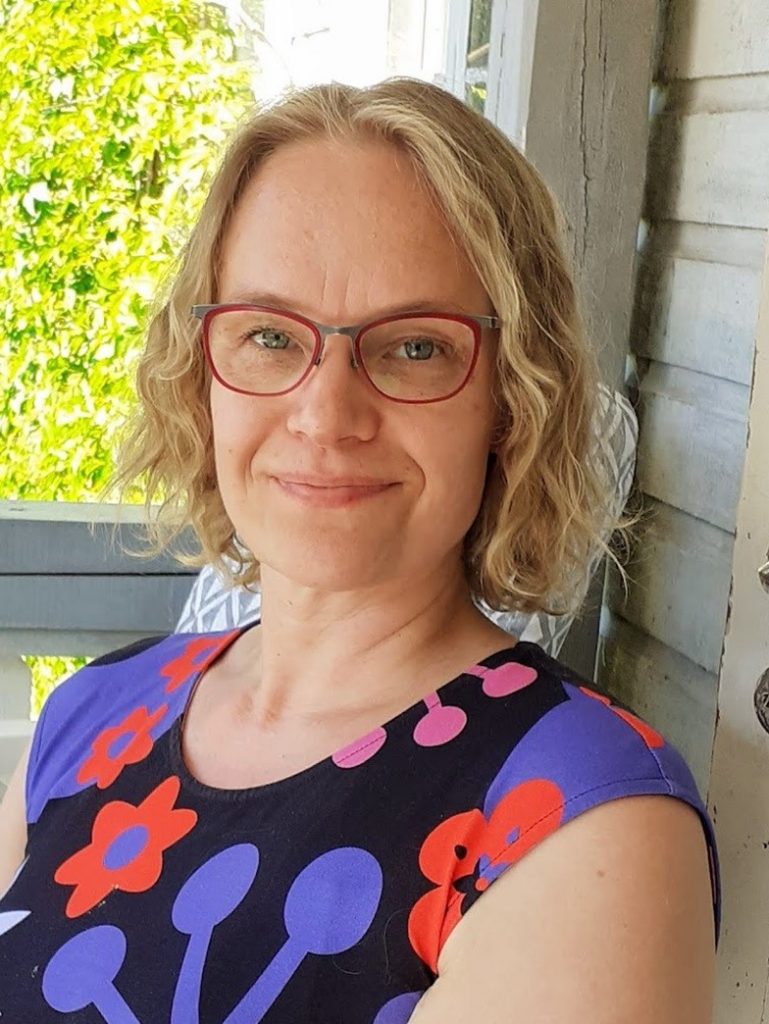Eastern Churches Go West: Minority Churches as Settlers and Transnational Actors in Finland
Maija Penttilä

As the Russian-speaking population living in Finland has grown, so have the numbers of Russian-speaking churches and their members. Some of these churches are firmly rooted in Finnish soil, such as the parishes of the Russian Orthodox Church, which have almost 100 years, or the Baptist church Vifania, whose roots are claimed to date back to when Finland was a grand duchy of the Russian Empire. There are also newer Evangelical churches, such as Ark of Salvation, which was registered by Russian-speaking migrants in 2000. Some church communities are very new, mostly groups of Pentecostals and Baptists, which have emerged only recently. Some of these have split from older Evangelical churches. Despite the length of their history in Finland, most – if not all – of today’s members of these Russian-speaking church communities moved to Finland starting in the 1990s. In the past two years, these churches have grown due to the Ukrainians fleeing the war. Therefore, this phenomenon raises questions concerning migrant integration and the transnational contacts between the people and churches in question and the societies from which Russian speakers come.
Churches Integrating
Scholars of migration have often viewed migrant churches as settlement institutions that perform social work and help individuals to integrate into a new society. Churches are probably the most supportive and welcoming institutions for migrants. Indeed, previous studies have found that many migrants rely on faith and faith-based organisations to find their place in a new society. Religious organisations may also become advocates for the rights of migrants, reflecting the growing role of religion in contemporary secular and political life. For example, in Finland, the pastors of some Russian-speaking churches have been party candidates in municipal elections. These churches bond their members through shared memory, and some of them also help members become active citizens, thus mediating between individuals and society. However, some of them form closely knit communities based on religious diaspora without significant connections to outside society, except for the purpose of evangelisation.
Not all migrant churches purposefully support or create social or settlement activities to integrate newcomers. For example, in Finland, Russian-speaking Evangelical churches actively supported the settlement of immigrants through language courses, psychological support and administrative assistance during the 1990s, when there was a considerable flow of Russian-speaking immigrants. Later, though, the growing number of services and cultural activities offered in Russian made these churches turn their focus to religious activities. Other studies of Russian Orthodox parishes in Western Europe have shown that they focus on spiritual guidance, fundraising and administrative work to build Russian Orthodox cathedrals rather than social work for integration.
Faith Crossing Borders
During the past decades, scholars of migration churches have highlighted the transnational practices these institutions maintain, support and shape. Transnational space is a concept that has a geographical meaning, but it is also a metaphor. In addition to including cross-border connections and communication, transnationalism also embodies the feeling of place-boundedness. Due to transnational migration, the movement of religious ideas and practices between Finland, Estonia and Russia (the latter two being the countries where most Russian speakers have come from) has increased. The direction of the movement of faith has also changed. Historically, Evangelical churches came to Russia and Eastern Europe from the west; now, however, Russian speakers have founded these churches in Finland, which represents the opposite trend.
Although transnational space is much more multidimensional and complex than mere geographical space and border crossing, space cannot be reduced to metaphorical representations nor can it escape the structural controls of transnational activities. The tightening of the border between Finland and Russia has weakened the foreign exchanges of Russian-speaking parishes, but not necessarily their transnational religious identities. At present, connections are easier with other countries rather than Russia, from where fellow believers cannot come (e.g., for camp meetings and conferences); it is also complicated to go to Russia with a European passport, which many Russian speakers in Finland already hold.
Not all migrant churches support cross-border activities or view national cultures as part of their original identities. This is especially the case when the church is formed by different ethnic groups that come from various countries. Russian speakers are often only united by a common native language rather than ethnicity or country of origin. The role of national cultures has also changed in recent years. For instance, after Russia’s annexation of Crimea, some churches formed by different nationalities still tried to respect and celebrate Russian and Ukrainian national celebrations. Before February 2022, in the research interviews, many people expressed opinions such as ‘The countries are at war, but the churches are not.’ However, in 2022, the situation worsened, and national cultures (and especially the different countries’ policies) are now often avoided as contentious topics. Among Adventists, there is even talk of the ‘heavenly homeland’ and ‘heavenly patriotism,’ which are more important than ethnic or national commitments. Incidentally, Adventists are the only Russian-speaking parish that made an explicit appeal for peace after Russia’s invasion of Ukraine in 2022 based on their Christian identity.
Adjustment and Differentiation
Migrant churches adjust to the surrounding society by aligning themselves with it and mirroring its practices, but they also employ a rhetoric of differentiation. In Orthodox parishes, the emphasis is on tradition rather than the ability to change. The parishes under the Moscow patriarchate confirm their allegiance to the hierarchy of the Russian Orthodox Church and view Russian Orthodoxy as authentic. At the same time, they have strengthened their narrative of historicity in Finland as well as their obedience to Finnish laws, and they pray for the Finnish government. Furthermore, Vifania and Ark of Salvation both include the history of Russian Evangelicalism in Finland on their websites’ home pages. They also maintain the rhetoric of Soviet Evangelicalism, which originated behind the Iron Curtain and is more conservative and differs strongly from that of Western Evangelical and Baptist churches. Different churches adopt different strategies. Some integrate into the surrounding society, while others uphold a transnational identity or create an unchangeable diaspora. However, all of them adjust and differentiate in certain ways.

Dos. Maija Penttilä
née Turunen, is university lecturer and has a title of docent in Church and Social Studies at the University of Helsinki. Her areas of specialization are Pentecostal and Orthodox churches in Russia as well as Russian-speaking church communities and everyday religion of Russian speakers in Finland.
Literature
Krihtova, T., & Penttilä, M. (2020). A minority within a minority: Russian Evangelicals in Finland negotiating their identity and establishing their presence in society. In I. Mikeshin (Ed.), Eight essays on Russian Christianities (pp. 156–180). Saint Petersburg Center for the History of Ideas.
Penttilä, M. (2022).Post-Soviet believers in migration: Constructing memory-based and space-bounded identity narratives in Finland. Journal of Religion in Europe, 15(1/4), 130–161.
Solari, C. (2006). Transnational politics and settlement practices: Post-Soviet immigrant churches in Rome. American Behavioral Scientist, 49(11), 1528–1553.